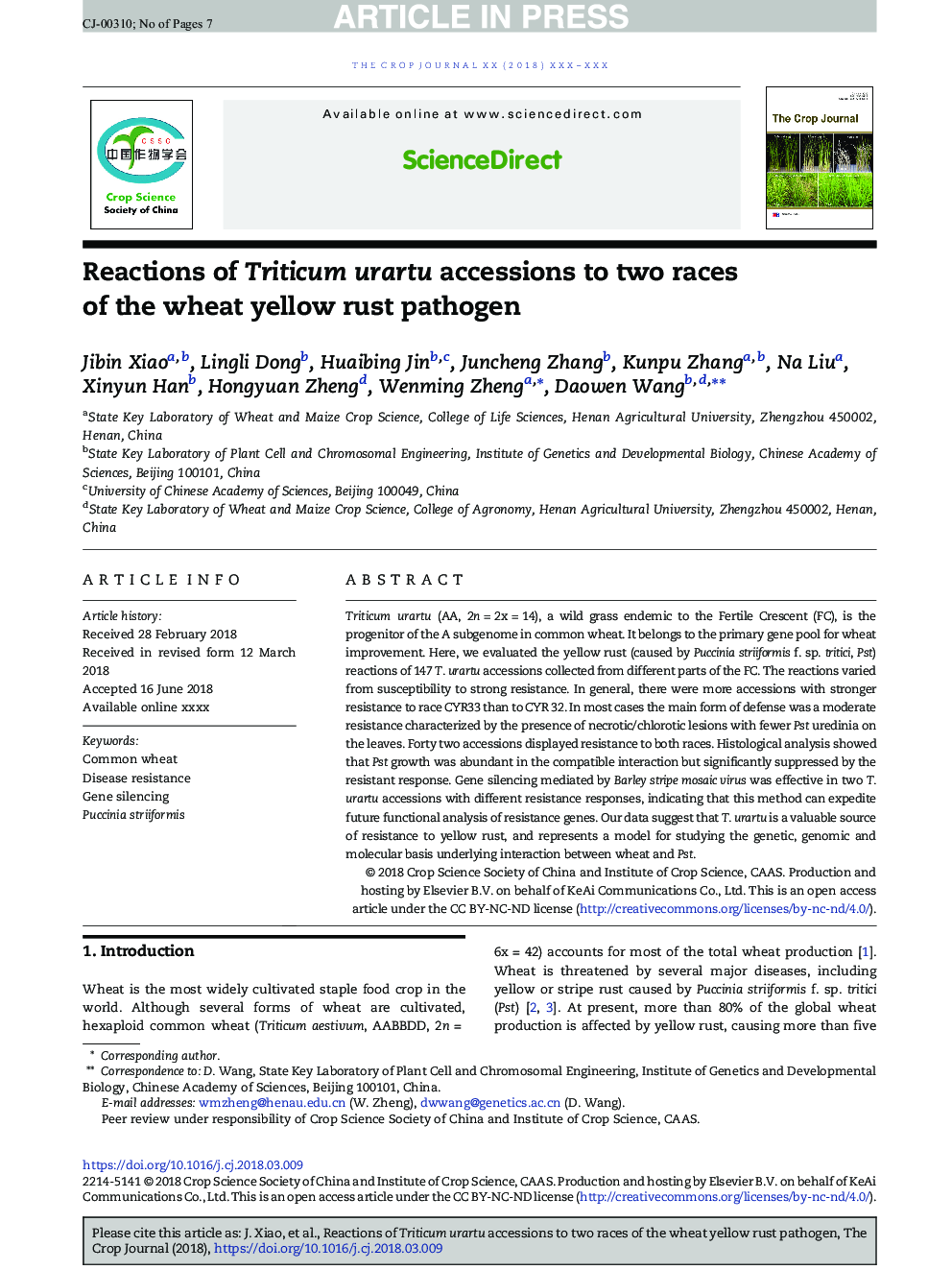| Article ID | Journal | Published Year | Pages | File Type |
|---|---|---|---|---|
| 11015364 | The Crop Journal | 2018 | 7 Pages |
Abstract
Triticum urartu (AA, 2nâ¯=â¯2xâ¯=â¯14), a wild grass endemic to the Fertile Crescent (FC), is the progenitor of the A subgenome in common wheat. It belongs to the primary gene pool for wheat improvement. Here, we evaluated the yellow rust (caused by Puccinia striiformis f. sp. tritici, Pst) reactions of 147 T. urartu accessions collected from different parts of the FC. The reactions varied from susceptibility to strong resistance. In general, there were more accessions with stronger resistance to race CYR33 than to CYR 32. In most cases the main form of defense was a moderate resistance characterized by the presence of necrotic/chlorotic lesions with fewer Pst uredinia on the leaves. Forty two accessions displayed resistance to both races. Histological analysis showed that Pst growth was abundant in the compatible interaction but significantly suppressed by the resistant response. Gene silencing mediated by Barley stripe mosaic virus was effective in two T. urartu accessions with different resistance responses, indicating that this method can expedite future functional analysis of resistance genes. Our data suggest that T. urartu is a valuable source of resistance to yellow rust, and represents a model for studying the genetic, genomic and molecular basis underlying interaction between wheat and Pst.
Related Topics
Life Sciences
Agricultural and Biological Sciences
Agronomy and Crop Science
Authors
Jibin Xiao, Lingli Dong, Huaibing Jin, Juncheng Zhang, Kunpu Zhang, Na Liu, Xinyun Han, Hongyuan Zheng, Wenming Zheng, Daowen Wang,
